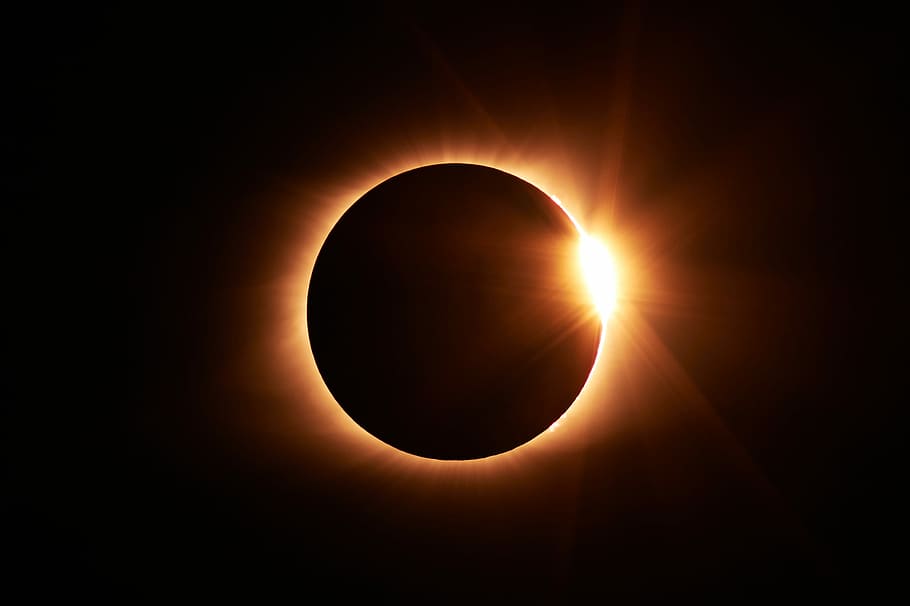

The annular solar eclipse will cross North, Central and South America on Oct. Upcoming celestial eventsĮven though the total solar eclipse is still over a year away, it's not the only opportunity to see a celestial event from right outside your home. It is also worth stealing a peek at the people around you – many people have a deep emotional response when the Sun goes into totality."Īfter just a couple of moments, the process that led up to totality will repeat in reverse, and the eclipse will come to an end. "The air temperature will drop and often an eerie silence will settle around you. You may also be able to see some particularly bright stars or planets in the darkened sky," NASA says. You may be able to see a 360 degree sunset. "During totality, take a few seconds to observe the world around you. That's when the moment finally comes – the sky is dark and the sun appears like a glowing black orb. Then, right before totality, the beads will disappear, leaving only a single bright spot referred to as the "diamond ring." As the moon closes in on totality, "Baily's Beads" will appear – small light rays from the sun that quickly paper along the moon's horizon. This can last between 70 and 80 minutes in most places. The event will begin with what's called the partial stage, when the moon has not yet fully covered the sun, giving the giant star a crescent shape. The long-awaited moment of a total solar eclipse – totality – makes up just minutes of an hours-long process, and aside from that moment, it's crucial for people to wear special eclipse glasses so as to not hurt their eyes. It's only during these few minutes that it's safe for people to remove their special eclipse glasses. While the eclipse will last a couple of hours, totality will last just about four minutes. The first spot in North America expected to witness totality is Mexico's Pacific coast at around 11:07 a.m.


 0 kommentar(er)
0 kommentar(er)
